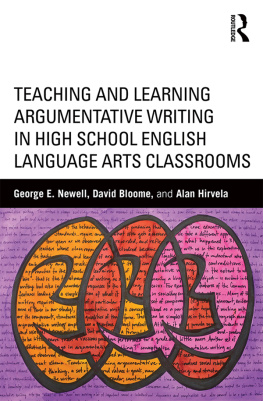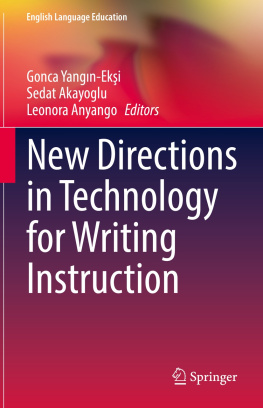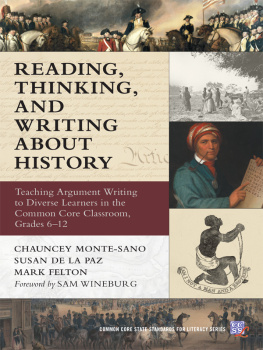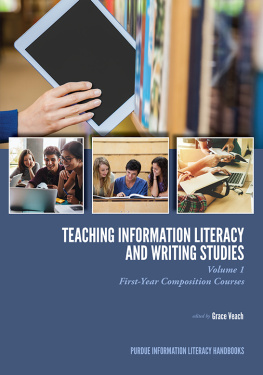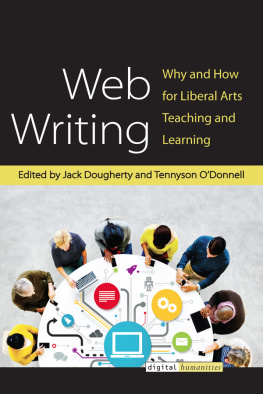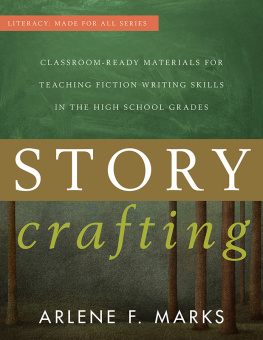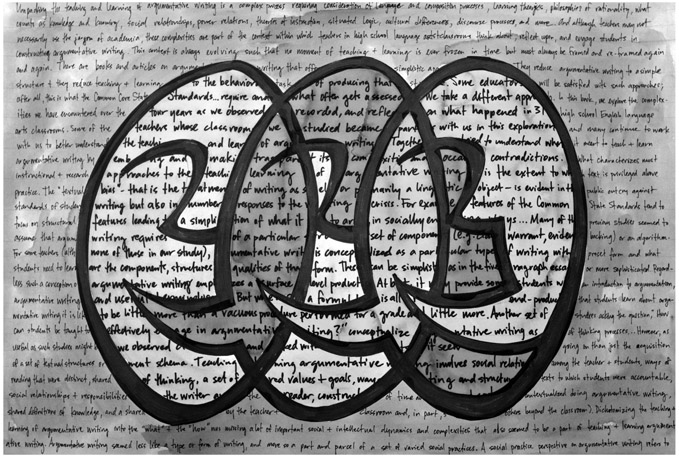First published 2015
by Routledge
711 Third Avenue, New York, NY 10017
and by Routledge
2 Park Square, Milton Park, Abingdon, Oxon, OX14 4RN
Routledge is an imprint of the Taylor & Francis Group, an informa business
2015 Taylor & Francis
The right of the editors to be identified as the authors of the editorial material, and of the authors for their individual chapters, has been asserted in accordance with sections 77 and 78 of the Copyright, Designs and Patents Act 1988.
All rights reserved. No part of this book may be reprinted or reproduced or utilized in any form or by any electronic, mechanical, or other means, now known or hereafter invented, including photocopying and recording, or in any information storage or retrieval system, without permission in writing from the publishers.
Trademark notice: Product or corporate names may be trademarks or registered trademarks, and are used only for identification and explanation without intent to infringe.
Library of Congress Cataloging-in-Publication Data
Newell, George (George Edward), 1951
Teaching and learning argumentative writing in high school English
language arts classrooms / George E. Newell, David Bloome, Alan Hirvela.
pages cm
Includes bibliographical references and index.
1. Composition (Language arts)Study and teaching (Secondary)
2. Reasoning. I. Bloome, David. II. Hirvela, Alan. III. Title.
LB1631.N43 2015
808.0420712dc23
2014048712
ISBN: 978-1-138-01742-9 (hbk)
ISBN: 978-1-138-01743-6 (pbk)
ISBN: 978-1-315-78049-8 (ebk)
Typeset in Bembo
by Apex CoVantage, LLC
we speak therefore
This watercolor painting incorporates passages of this books introduction. The words and phrases that resonated with me centered not on the idea of arguing, but around having extended, complex, and contradictory conversations where people build on the ideas and speech of others. The visual image reminds me of feminist gatherings where the speakers words are echoed by closer audience members back to more distant listeners in waves, voices spreading in expanding circles, reflected and refracted again and again. Our words, our selves, our fates are interconnected in powerful ways; we can use them as we may.
Melinda J. Rhoades
Contents
In this appendix we describe key elements of the research process, including information about sampling, instrumentation, and analysis of the data. All instruments developed for the research are included in .
The Participants
This study was conducted as part of a three-year exploratory study of teaching and learning argumentative writing in high school English language arts classrooms. We studied grades 9 to 12 in ten high schools. Our sample, comprising 31 classrooms (31 teachers and 574 students), was selected from high schools in urban, suburban, and rural school districts located in central Ohio. We selected English language arts teachers with local reputations for excellent writing instruction based on recommendations of local educators and school leaders and teacher educators, and from these we made a final selection based on the teachers and administrators willingness to work with us as well as the schools ability to contribute to the overall diversity in student populations, challenges, and locations in our sample. We secured permission from building principals and school district administrators. In some cases, we traveled to school district offices to meet with district officials or with building principals. Perhaps because we requested expert and experienced writing teachers, most of the teachers whom we contacted were eager to work with us.
To select each teacher, we interviewed him or her by asking questions about an approach to teaching argumentative writing, responding to student writing, and plans for the class that we might observe in-depth during an instructional unit on argumentative writing. The selection criteria for selecting expert writing teachers included at least five years teaching experience; a local reputation for successful writing instruction; experience with teaching argumentative writing; students who are engaged in what is being taught; exceptionally high expectations for their students; and a clear sense of instructional purpose, that is, a cogent rationale for teaching argumentative writing.
Thirty-one English language teachers and 574 students from 13 urban and 9 suburban high schools in central Ohio participated in the study over three years. Among the 31 teachers, 3 teachers were African American, and the other teachers were white. The average number of years of teaching as a full-time teacher was 15.30 years (SD = 11.00, range = 2 to 49 years). Twelve (38%) teachers had been teaching argumentative writing for more than 11 years, twelve (39%) teachers for 6 to 10 years, and seven (22%) teachers for less than 5 years. The highest educational degrees for the participating teachers were doctorates for 4 teachers (13%), masters for 24 teachers (77%), and bachelors for 3 teachers (10%).
For each classroom observed, we selected four case study students (two females, two males). Our goal was to select four students who represented various levels of academic achievement as well as students who may be willing to talk with the field researcher(s). Decisions about which students were selected were made in consultation with the classroom teacher. These case study students were tracer students. When making decisions about what to video record in a classroom, we followed the case study students. When making decisions about which peer instructional groups to follow, we selected those peer instructional groups involving the case study students.
Classroom Observations
We observed each of the 31 teachers teaching one of their high school English language arts classes during an instructional unit on argumentative writing. A generic schedule for observations of an instructional unit was provided, and it is reproduced in . This was adapted at each site to fit the particular organizational structure of each school. The teachers defined an instructional unit in ways that varied in length, content, and purpose. Thus, we observed a different number of class sessions across the teachers; what we tried to keep constant was observing the beginning, middle, and end of an instructional unit. We wrote field notes, created digital video and audio recordings of writing instruction, collected student writing samples and supplementary materials (e.g., copies of textbook pages and worksheets). At the end of each class session, we wrote reflective field notes adding details to the notes taken during the session and insights about theoretical and methodological issues. These field notes and the information recorded in a log of classroom observations were entered into a digitized database.
During the instructional unit, we timed and digitally recorded the class activities and interactions in order to determine the allocation of class time to various activities (e.g., teacher-led discussion, small-group work, and seat-work).
Schedule for Observation of Case Study Classrooms
| Preparations |
| Contact teacher to schedule meeting. |
| Prepare copies of all forms and other materials for meeting. |
| Meeting with the Teacher Prior to Observational Phase |

